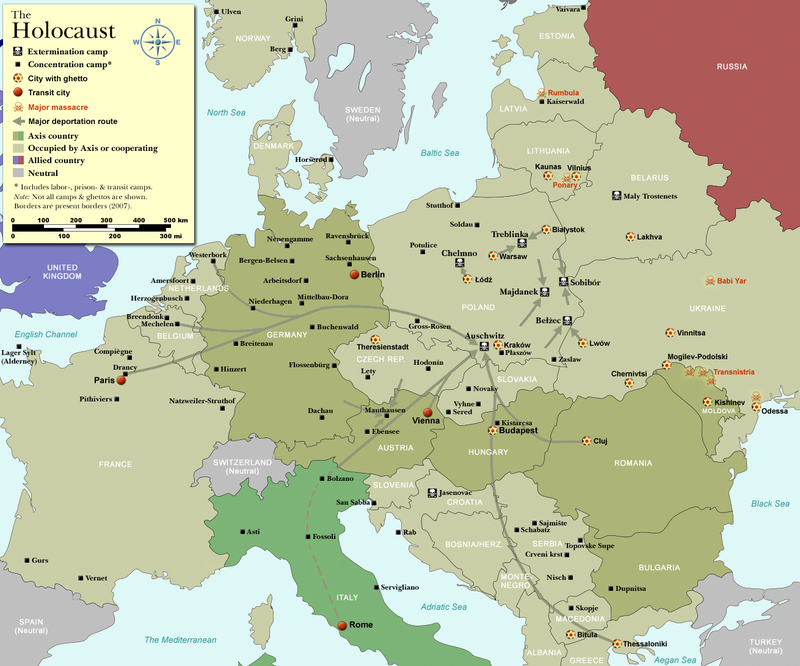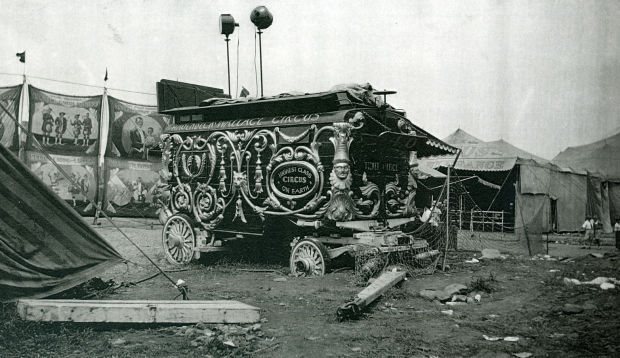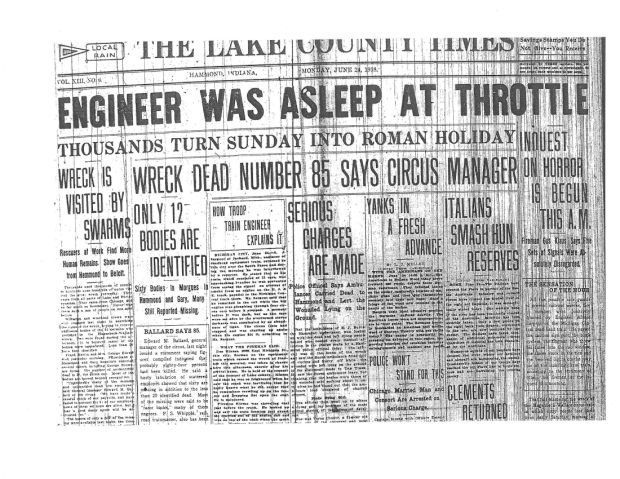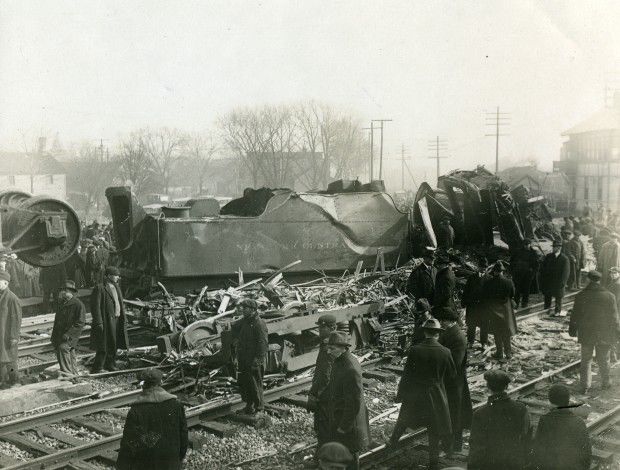
We have all seen the pictures of the cattle wagons used to transport the Jews and other ‘Undesirables’ to the concentration camps and ghettos. Without a shadow of a doubt the Nazi Railways network played a pivotal role in the ‘Final Solution’ .Ironically(for the lack of a better word) though the same network also potentially contributed to the downfall of the ‘Third Reich’ that and the arrogance of Hitler who had not envisaged or anticipated the number of trains he needed for operation Barbarossa to succeed.Combined with the fact that starting the operation on the 22nd of June was too late to ensure reaching Moscow before winter.
Shortly after the invasion of the Soviet Union the Germans took control of the Minsk Railway Station. All the timetable printers at the station were Jewish, Hitler had them all shot without anyone able to replace them.

The first mass deportation of Jews from Nazi Germany occurred in less than a year before the outbreak of war. It was the forcible eviction of German Jews with Polish citizenship fuelled by the Kristallnacht. Approximately 30,000 Jews were rounded up and sent via rail to refugee camps. In July 1938 both the United States and Britain at the Évian Conference in France refused to accept any more Jewish immigrants. The British Government agreed to take in the shipment of children arranged by Nicholas Winton in Prague, Czechoslovakia, on the conditions that he pay the cost (via Czech travel agency Cedok) and arrange for the foster care. Winton managed to arrange for 669 children to get out on eight trains to London (a small group of 15 were flown out via Sweden).
Forgotten History-Nicholas Winton an unsung Hero
The ninth train was to leave Prague on 3 September 1939, the day Britain entered World War II. The train never left the station, and none of the 250 children on board were seen again. All European Jews trapped under the Nazi regime became the target of Hitler’s “Final Solution to the Jewish Question.
The European rail network played a crucial role in the implementation of the “Final Solution.” Jews from Germany and German-occupied Europe were deported by rail to the killing centers in occupied Poland.

The Germans attempted to disguise their deadly intentions, referring to these deportations as “resettlement to the east.” The victims were told they were being taken to labor camps, but in reality, from 1942, deportation for most Jews meant transit to extermination camps.

Deportations on this scale required the coordination of numerous German government ministries and state organizations, including the Reich Security Main Office (RSHA), the Transport Ministry, and the Foreign Office. The RSHA coordinated and directed the deportations; the Transport Ministry organized train schedules; and the Foreign Office negotiated with German-allied states about handing over their Jews.

The Germans used both freight and passenger cars for the deportations. They did not provide the deportees with food or water, even when the transports had to wait days on railroad spurs for other trains to pass. The people deported in sealed freight cars suffered from intense heat in summer, freezing temperatures in winter, and the stench of urine and excrement. Aside from a bucket, there were no provisions for sanitary requirements. Without food or water, many deportees died before the trains reached their destinations. Armed guards shot anyone trying to escape. Between the fall of 1941 and the fall of 1944, millions of people were transported by rail to the extermination camps and other killing sites in occupied Poland and the occupied Soviet Union.

Most of the Jews were forced to pay for their own deportations, particularly wherever passenger carriages were used. This payment came in the form of direct money deposit to the SS in light of the “resettlement to work in the East” myth. Charged in the ghettos for accommodation the adult Jews paid full price one-way tickets, while children under 10–12 years of age paid half price. Those who were running out of money in the ghetto were loaded onto trains to the East as first, while those with some remaining supplies of gold and cash were shipped as last.
The SS forwarded part of this money to the German Transport Authority to pay the German Railways for transport of the Jews. The Reichsbahn was paid the equivalent of a third class railway ticket for every prisoner transported to their destination: 8,000,000 passengers 4 Pfennig per track kilometer, times 600 km (average voyage length), equaled 240 million Reichsmarks. Children under four went free.
The Reichsbahn pocketed both this money and their own share of the cash paid by the transported Jews after the SS fees. According to an expert report established on behalf of the German “Train of Commemoration” project, the receipts taken in by the state-owned Deutsche Reichsbahn for mass deportations in the period between 1938 and 1945 reached a sum of US $664,525,820.34

Following the Wannsee Conference of 1942, the Nazis began to murder the Jews in large numbers at newly built death camps of Operation Reinhard. Since 1941, the Einsatzgruppen, mobile extermination squads, were already conducting mass shootings of Jews in the Eastern territories which were occupied earlier by the Soviet Union, as well as east of the 1939 Soviet borders . The Jews of Western Europe were either deported to ghettos emptied through mass killings, such as the Rumbula massacre of the inhabitants of the Riga Ghetto, or sent directly to Treblinka, Belzec and Sobibór extermination camps built in spring and summer of 1942 only for gassing. Auschwitz II Birkenau chambers began operating in March. The last death camp, Majdanek, launched them in late 1942.

At Wannsee, the SS estimated that the “Final Solution” could ultimately eradicate up to 11 million European Jews; Nazi planners envisioned the inclusion of Jews living in neutral and non-occupied countries such as Ireland, Sweden, Turkey, and the United Kingdom. Deportations on this scale required the coordination of numerous German government ministries and state organisations, including the Reich Main Security Office (RSHA), the Transport Ministry, and the Foreign Office. The RSHA coordinated and directed the deportations; the Transport Ministry organized train schedules; and the Foreign Office negotiated with German-allied states and their railways about “processing” their own Jews.
In recent years, the German spokesman for the Train of Commemoration remembrance project, Hans-Rüdiger Minow told The Jerusalem Post that from among the World War II railway staff and officials, there is “no word about those who committed the crimes” even though 200,000 train employees were involved in the rail deportations and “10,000 to 20,000 were responsible for mass murders”. The railwaymen were never prosecuted.
The first trains with German Jews expelled to ghettos in occupied Poland began departing from central Germany on 16 October 1941.Subsequently called Sonderzüge (special trains), the trains had low priority for the movement and would proceed to the mainline only after all other transports went through, inevitably extending shipping time beyond expectations.
The trains consisted of sets of either third class passenger carriages,but mainly freight cars or cattle cars or both; the latter packed with up to 150 deportees, although 50 was the number proposed by the SS regulations. No food or water was supplied. The Güterwagen boxcars were only fitted with a bucket latrine. A small barred window provided irregular ventilation, which oftentimes resulted in multiple deaths from either suffocation or the exposure to the elements.Some freight cars had a layer of quick lime on the floor.
At times the Germans did not have enough filled up cars ready to start a major shipment of Jews to the camps,so the victims were kept locked inside overnight at layover yards. The Holocaust trains waited for more important military trains to pass. An average transport took about four days. The longest transport of the war, from Corfu, took 18 days. When the train arrived at the camp and the doors were opened, everyone was already dead.
Due to delays and cramped conditions, many deportees died in transit. On 18 August 1942, Waffen SS officer Kurt Gerstein had witnessed at Belzec the arrival of “45 wagons with 6,700 people of whom 1,450 were already dead on arrival.” That train came with the Jews of the Lwów Ghetto,less than a hundred kilometers away.

The standard means of delivery was a 10 metre long cattle freight wagon, although third class passenger carriages were also used when the SS wanted to keep up the “resettlement to work in the East” myth, particularly in the Netherlands and in Belgium. The SS manual covered such trains, suggesting a carrying capacity per each trainset of 2,500 people in 50 cars, each boxcar loaded with 50 prisoners. In reality however, boxcars were crammed with up to 100 persons and routinely loaded from the minimum of 150% to 200% capacity.

This resulted in an average of 5,000 people per trainset; 100 persons in each freight car multiplied by 50 cars. Notably, during the mass deportation of Jews from the Warsaw Ghetto to Treblinka in 1942 trains carried up to 7,000 victims each.
In total, over 1,600 trains were organised by the German Transport Ministry, and logged mainly by the Polish state railway company taken over by Germany, due to the majority of death camps being located in occupied Poland.Between 1941 and December 1944, the official date of closing of the Auschwitz-Birkenau complex, the transport/arrival timetable was of 1.5 trains per day: 50 freight cars × 50 prisoners per freight car × 1,066 days = 4,000,000 prisoners in total.
On 20 January 1943, Himmler sent a letter to Albert Ganzenmüller, the Under-secretary of State at the Reich Transport Ministry, pledging: “need your help and support.If I am to wind things up quickly, I must have more trains.”
Of the estimated 6 million Jews exterminated during World War II, 2 million were murdered on the spot by the military, political police, and mobile death squads of the Einsatzgruppen aided by the Orpo battalions and their auxiliaries. The remainder were shipped to their deaths elsewhere.
It is said that one time Hitler’s train had to stop next to a ‘Transport train’, the victims on that train who spotted Hitler on the train standing next to them, gave him an icy and defiant stare. Hitler did not like that and had it arranged that no Troops train would ever be scheduled at the same time as a ‘Transport’ train
The excuse which was often used by the Germans after the war was”We didn’t know” but if you see thousands of people being cramped in a train, and I am sure the ordinary Germans would have witnessed this occasionally, you must have been aware nothing good could come from that.









 Dorpmueller was general manager of Deutsche Reichsbahn-Gesellschaft and the Reich Minister for Transport from 1937 to 1945.After the Nazi seizure of power Dorpmüller replaced nearly all “non-Aryan” workers with National Socialists. Dorpmüller became Reich Transport Minister on 2 February 1937
Dorpmueller was general manager of Deutsche Reichsbahn-Gesellschaft and the Reich Minister for Transport from 1937 to 1945.After the Nazi seizure of power Dorpmüller replaced nearly all “non-Aryan” workers with National Socialists. Dorpmüller became Reich Transport Minister on 2 February 1937 He collaborated in the transportation scheme for elderly German Jews to Theresienstadt and made sure the transport to the extermination camps as set up under Operation Reinhardt ran as smoothly as possible. However there were some complaints about the management of the transports by Ganzemüller. On July 16 Himmler’s personal adjutant Karl Wolff, , complained to the newly appointed under-secretary about irregularities on transport and track repairs on the line to the extermination camp at Sobibor. Ganzenmüller replied in writing on 28 July 1942 as follows:
He collaborated in the transportation scheme for elderly German Jews to Theresienstadt and made sure the transport to the extermination camps as set up under Operation Reinhardt ran as smoothly as possible. However there were some complaints about the management of the transports by Ganzemüller. On July 16 Himmler’s personal adjutant Karl Wolff, , complained to the newly appointed under-secretary about irregularities on transport and track repairs on the line to the extermination camp at Sobibor. Ganzenmüller replied in writing on 28 July 1942 as follows:










































You must be logged in to post a comment.